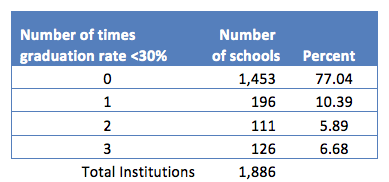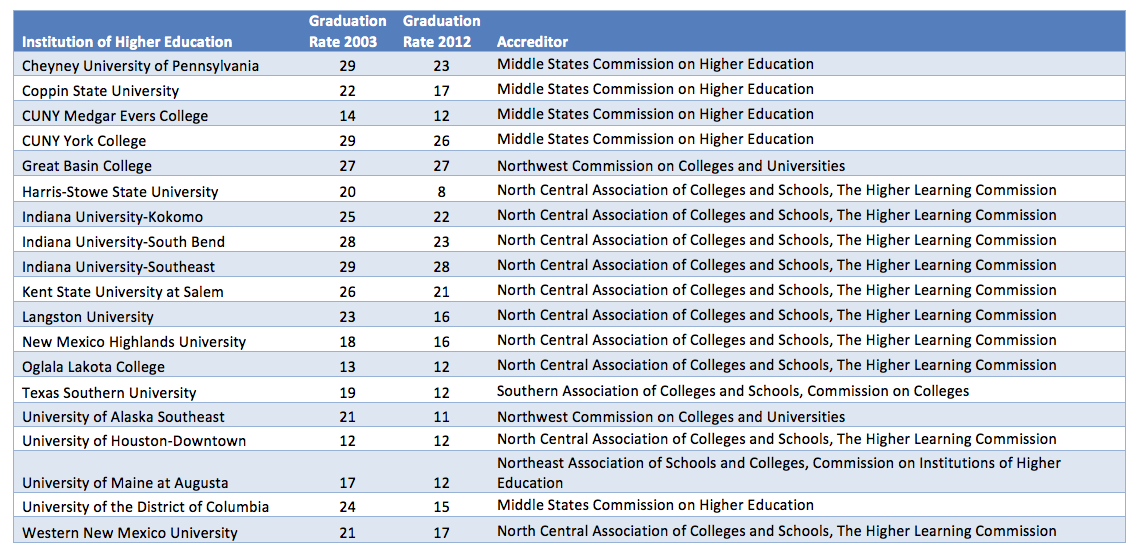Why Accredit Colleges and Universities That (New Data Shows) Aren’t Delivering?
A decade ago, the U.S. Department of Education began reporting “Student Right To Know” graduation rates for America’s colleges and universities. While this federally mandated measure is flawed—covering only full-time, first-time, beginning students and focused on a six-year window for graduation—it still captures the completion statistics of one of the nation’s largest groups of students. And the news isn’t good. Ten years of trend data makes it clear that our national commitment to a “completion agenda” hasn’t budged the graduation rate at the nation’s four-year colleges. It’s still hovering at around 51 percent. Worse than a stagnant overall graduation rate is the sobering fact that the nation supports dozens upon dozens of colleges and universities that never get any better. Let’s dig deeper, looking at colleges and universities with graduation rates below 30 percent in 2003 (the first year NCES reporting year) and 2012 (the most recent), and then 2007 (halfway between). This table shows how many times at those three points colleges and universities fell below the 30 percent graduation mark:

So, 126 schools have been stuck in the bottom of the distribution for the whole decade. Worse, graduation rates have fallen for 50 of them, dropping from an average of 21 percent in 2002 to 16 percent in 2011. Many of these are small, not-for-profit schools with religious affiliations. But 19 are public and serve more than 85,000 students. Listed below are these schools, their graduation rates in 2002 and 2012, and their accrediting agencies. Together these underperformers received $30 million in Pell grants; $481 million in state appropriations during the last year alone.

Since accreditation is one of American higher education’s key gate-keeping mechanisms, maybe we should be more concerned about whether students graduate and rethink accrediting these failure factories.